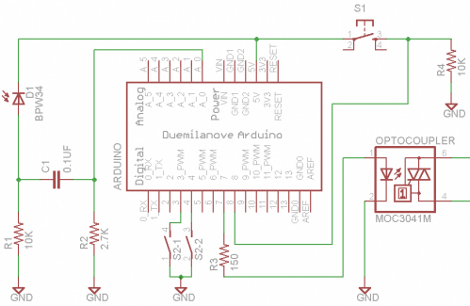
[Max] designed this circuit to add smart flash synchronization to his photography arsenal. He did this because ‘dumb’ TTL based flashes won’t play nicely with more sophisticated systems like the Nikon Advanced Wireless Lighting. By building a microcontroller into the mechanism, he’s added functionality for several different scenarios, ensuring that he’ll never again have problems with early flash triggering. Now that the kinks have been ironed out in the prototype, the code and hardware can be migrated over to whatever microcontroller suits you.














Duemialonove?
This can be done with a Pic12…..
what a waste of a perfectly good part…
@dmitrygr: “Now that the kinks have been ironed out in the prototype, the code and hardware can be migrated over to whatever microcontroller suits you.”
Fail.
@dmitrygr – If you RTFA he clearly states “Using the Arduino board is ok for prototyping purposes but it is a overkill for the application”
@dmitrygr
And your post is a waste of perfectly good posting space
YAY to the drino war, prefer ,y PIC’s to Atmel but if your a drino adict check out http://www.myamicus.co.uk/ a drino sheild compatible but using a 64Mhz Pic and a free compiler
Stupid flamewars every single time- it gets really annoying !
I am wondering if this circuit could be made battery-less just like analog optical slaves. The flash unit provides a couple of volts standby voltage that could be tapped. Only problem is filtering out the spikes when the flash is triggered.
Yep – this Arduino flaming is getting old..
@dmitrygr – You’re pathetic.